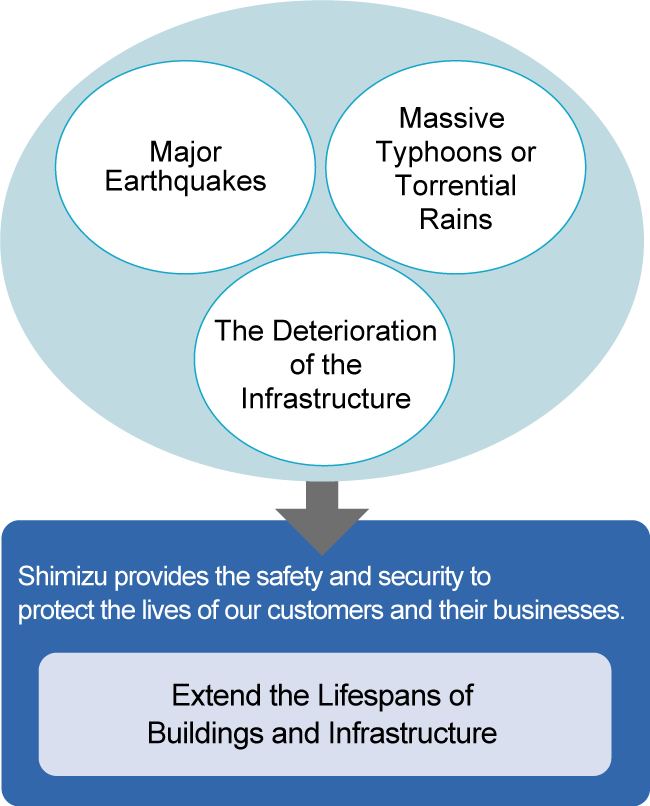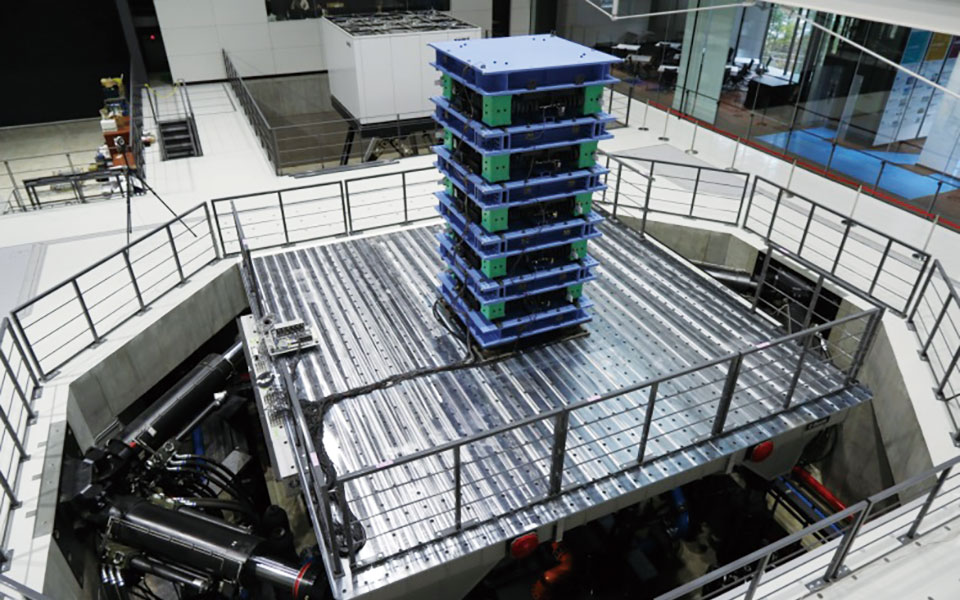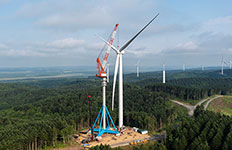Providing Safety and Security through Various Technology Development
Building facilities and social infrastructure that are safe during in disasters and performing maintenance, management, and renovation to keep them that way, is part of Shimizu’s mission as member of the construction industry.
There are also concerns about the future potential for a major earthquake, either directly beneath the Greater Tokyo Metropolitan Area or in the Nankai and Sagami troughs. Moreover, the impact of global warming has exposed the potential risk for disasters other than earthquakes, such as massive typhoons or torrential rains. The deterioration of the infrastructure, such as roads, bridges, other transportation networks, and lifelines such as water and sewer systems has become a serious problem.
We are working to develop the latest in disaster prevention and mitigation technology, ensure its widespread use, and extend the lifespans of buildings and infrastructure.

Earthquake Mitigation Technology Utilizing the Advanced Earthquake Engineering Laboratory
Our Advanced Earthquake Engineering Laboratory, which was built in the Institute of Technology in 2015, has two shaking tables. These enable integrated experimentation, measurement, and analysis in research and development on earthquake mitigation.

(the E-Spider large-stroke shaking table is visible in the background)
| E-Beetle Large-scale Shaking Table | E-Spider Large-stroke Shaking Table | |
|---|---|---|
| Table dimensions | 7 m x 7 m | 4 m x 4 m |
| Maximum load | 70 tons | 3 tons |
| Maximum acceleration | 2.7 G (horizontal) 2.2 G (vertical) * with a 35-ton load |
1.0 G (horizontal) 0.9 G (vertical) * with a 3-ton load |
| Maximum displacement | +/- 80 cm (horizontal) +/- 40 cm (vertical) |
+/- 150 cm (horizontal) + 90 cm/- 70 cm (vertical) |
The E-Beetle is a large-scale shaking table that can replicate the shaking that occurred during various earthquakes around the world in the past. It enables us to conduct shaking experiments using life-sized mock-ups of structures and various types of equipment.
The E-Spider large-stroke shaking table can realistically replicate the long-period motion in three dimensions. It is capable of simulating rotation in addition to vertical and horizontal motions.
We intend to use them to reveals the mechanisms of real earthquake damage and verify the effectiveness of aseismic technology.
Our goal is to step up earthquake response and BCP a level, and we have developed various kinds of technology from the three perspectives of the physical structures, operational aspects, and skills. We intend to use the experience to strengthen the development and roll-out of technology that will realize communitie that are stronger, safer, and more secure.



